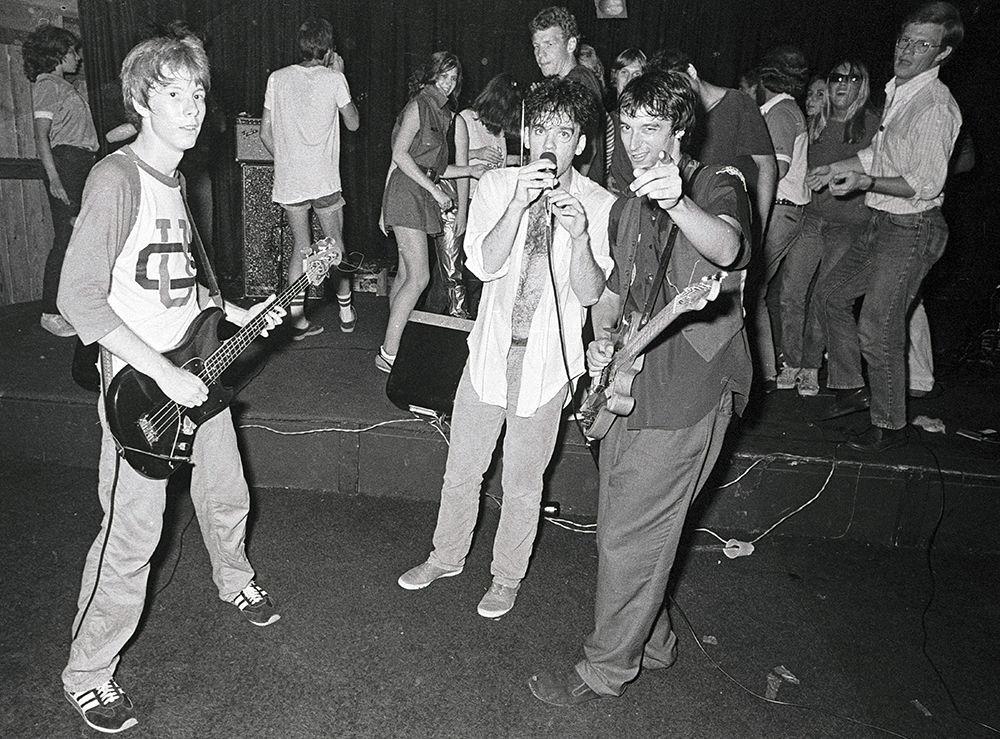More than 30 years after its closure, this long-closed Raleigh entertainment district is being brought to the spotlight once more through an all-new exhibit at the City of Raleigh Museum.
The Village Subway, also referred to as the Cameron Village Underground, was a live music hotspot open from 1972 until 1984 and was located under the Cameron Village shopping center. It was known for its numerous venues and clubs that showcased a wide variety of live music.
“It went by a couple names,” said Chris Seward, a staff photographer at The News & Observer. “It was usually called the Cameron Village Subway, the Village Subway or the Cameron Village Underground. It opened around 1972, and the first club to have music down there was called the Frog and Nightgown. It was a very jazz-oriented place, and there were also retail shops down there, like clothing stores and stereo stores. Originally, the concept came about loosely from Atlanta’s own underground shopping venue, [Underground Atlanta], which was a well-known place in the southeast, and I think they wanted to do their own local version of it. Over time, just because the foot traffic for the retail businesses wasn’t quite there because it wasn’t on the street, it ended up being several music clubs down there.”
Though the venue has been closed for many years, and the underground passages have been closed off to the public, recent interest in the location inspired the City of Raleigh Museum to create an exhibit titled “The Underground” focused on the location.
“Back in 2003, a local writer who runs a blog wrote something up on The Underground, and it just kind of set people on fire, and that matured into Chris going back into his archives to pull out images that he had shot while in the club,” said Ernest Dollar, the director of the City of Raleigh Museum. “At one point, there was a book that was going to be made, though that didn’t go through, but we were working with them at that time and said “Hey, in addition to this book, let’s put together an exhibit,” so we went through with the exhibit idea.”
Seward, who visited the location many times during its operation, contributed the photos for the exhibit.
“I started going there when was at NC State in the late ‘70s,” Seward said. “Back then, you could drink beer at 18, so a lot of NC State students would go to the clubs to see bands. When I was a little younger, like a freshman or sophomore, I wasn’t there that much, but when I got a bit older, I got more into the live music scene and started going there more often. When I got out of school, I ended up working for The Spectator, an arts and entertainment weekly [magazine], which was pretty revolutionary for Raleigh at the time. Going down there was a blast: I loved rock and roll, I was a young photographer, and working for a publication gave me a good reason to go down there. I would go down there, see who was playing, and shoot pictures of them.”
Over the many years of visiting The Village Subway’s venues and clubs, Seward shot thousands of pictures, though his process of taking them differs much from today’s practices.
“Back then, photography was a lot different,” Seward said. “It was all in black and white film, the clubs were very dark, and it was difficult to take photos in a dark situation, especially with all the equipment and film we used. I always wanted to catch the moments where there was good light, and editing it was really a challenge. I literally had boxes of negatives, I shot thousands and thousands of pictures, but many of them were unusable because they were too dark, or the bands were moving and they had motion in them. Technically speaking, they weren’t usable, but would shoot enough to get stuff. I always wanted to catch the energy and the mood of the bands to give the reader or viewer a sense of what it was like to be there.”
To both those who attended the many clubs of The Village Subway as well as those wanting to learn about the location, the exhibit is a perfect way to look back on a piece of Raleigh’s history.
“One of the things we’d both like visitors to take away from this exhibit is that this is a part of Raleigh’s history,” Dollar said. “It’s something you may not find in the history books, but it’s still an important time and place in Raleigh’s history that has effected who we are today.”
The exhibit is free to view and will be open during normal museum hours until January 2019.













